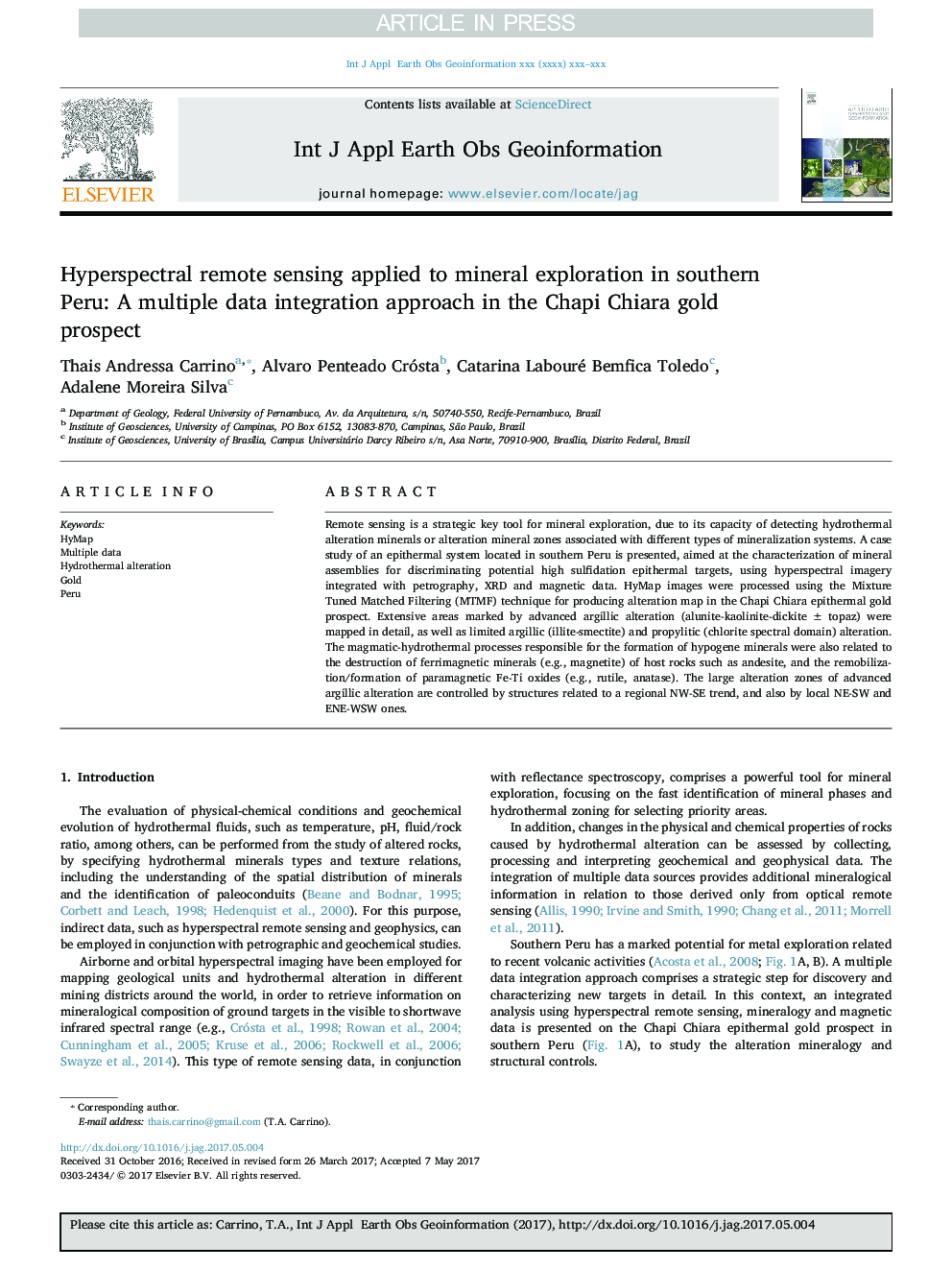| Article ID | Journal | Published Year | Pages | File Type |
|---|---|---|---|---|
| 8868038 | International Journal of Applied Earth Observation and Geoinformation | 2018 | 14 Pages |
Abstract
Remote sensing is a strategic key tool for mineral exploration, due to its capacity of detecting hydrothermal alteration minerals or alteration mineral zones associated with different types of mineralization systems. A case study of an epithermal system located in southern Peru is presented, aimed at the characterization of mineral assemblies for discriminating potential high sulfidation epithermal targets, using hyperspectral imagery integrated with petrography, XRD and magnetic data. HyMap images were processed using the Mixture Tuned Matched Filtering (MTMF) technique for producing alteration map in the Chapi Chiara epithermal gold prospect. Extensive areas marked by advanced argillic alteration (alunite-kaolinite-dickite ± topaz) were mapped in detail, as well as limited argillic (illite-smectite) and propylitic (chlorite spectral domain) alteration. The magmatic-hydrothermal processes responsible for the formation of hypogene minerals were also related to the destruction of ferrimagnetic minerals (e.g., magnetite) of host rocks such as andesite, and the remobilization/formation of paramagnetic Fe-Ti oxides (e.g., rutile, anatase). The large alteration zones of advanced argillic alteration are controlled by structures related to a regional NW-SE trend, and also by local NE-SW and ENE-WSW ones.
Keywords
Related Topics
Physical Sciences and Engineering
Earth and Planetary Sciences
Computers in Earth Sciences
Authors
Thais Andressa Carrino, Alvaro Penteado Crósta, Catarina Labouré Bemfica Toledo, Adalene Moreira Silva,
